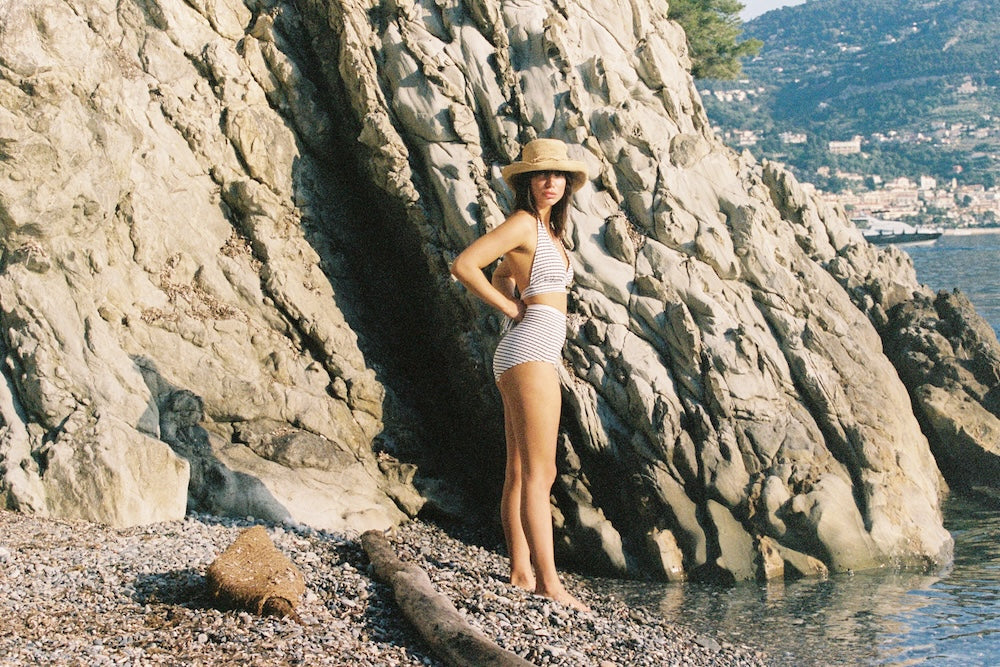There's a buzz about cold water swimming at the moment, and for a good reason. Swimming in cold water is good for you! Research suggests that cold water swimming improves mental health by reducing depression and possibly helping us cope better with stress. Plus, cold water swimmers get less sick, less often than everyone else, so we know it also strengthens our immune system.
But who wants to throw themselves into a cold bath? Not me! In fact, despite being an advocate of cold water swimming for several years, I still hate the thought of getting in. Unfortunately, you have to take the plunge to feel its amazing benefits. But here’s the secret, once you’re in, it feels amazing and it's so worth it.
So, here's 10 tips that help me plunge every time, even when the temperature drops!
1. START WITH SHOWERS TO AVOID COLD WATER SHOCK
Going out into the wilderness and jumping into a freezing lake or river may be enthusiastic, but it isn’t wise. The sudden drop in body temperature can cause a cold water shock response. This is a severe and life-threatening condition that you can't control, and if you survive, it can cause PTSD.
So before you head for the mountain lakes and rivers, start to acclimatize in the shower. Building up your tolerance to cold water in the shower can drastically reduce your cold water shock response, making your plunge bearable and safe.
2. BUT DON’T GET INTO A COLD SHOWER
The great thing about showers is the ability to adjust the water temperature. Try finishing your shower with a 15 second blast of cold water. Once you're comfortable with that, increase it to 30 seconds, 1 min, etc. Remember that the cold water in your shower will change temperature throughout the year.
Getting out of a cold shower might not appeal, but after a while, it starts to feel really weird to get out of the shower hot with all your pores open. A quick blast of cold closes up all your pores and leaves you feeling fresh. Once you’re comfortable ending your shower with a few minutes of cold, you’re ready for the thrill.
3. NOW GET INTO A COLD SHOWER
I’ll never forget the first time I did this… I was as high as a kite! It felt amazing. And because you're in the shower, you can whack the heat right up, before you flip back, to finish with cold. Increase the cold water time at the beginning of your shower just like you did at the end.
4. NOW YOU’RE READY FOR THE BIG OUTDOORS; WHERE TO SWIM?
First off, you need to know that you don’t need to crack the ice to get the benefits. Anything under 15°C will do the trick. In summer, I swim in rivers that come out of the ground at 11°C. I found this information with a quick google search and Wikipedia. In the winter, I swim in the sea, it drops to around 12°C. I know some northerners will laugh at these temperatures, but you don't need to be extreme to get the benefits, and of course, it's a lot safer.
Wherever you swim, know your environment. Where I'm from, there are strong rip tides in the sea and where I live now, there are lots of dams that can cause flash flooding. Swimming outdoors should be fun and good for the soul, but you need to be aware of your environment and any potential dangers.
5. WHAT TO WEAR
The more you swim in nature, the more you appreciate how much nature nurtures and heals us physically and mentally. That's why I like to wear Koraru swimwear. Koraru's sustainable swimwear takes care of Mother Nature, just as she takes care of me. I wear my Koraru burgundy zabel tube one-piece in winter because it's snug and I like a bit of color. In the summer, I wear my favorite Koraru bikini. And that's it!
But if you're swimming in colder temperatures, you might want some accessories. Many cold water swimmers further north also wear neoprene gloves, wetsuit socks, a swimming hat, and a wetsuit. Get the right kit for you and your environment.
6. BREATHE OUT AS YOU GO IN
This is the number one hack I share with newbies, and it works every time. Let's face it; it's just not nice getting into cold water but breathing out as you go in makes it a whole lot easier. Your parasympathetic nervous system kicks in as you exhale, so you relax into the water. If you don’t do this, the cold water takes your breath away, and you tense up. All you want to do is run in the opposite direction as your body kicks into fight or flight. So breathe out and relax in.
7. TIME YOURSELF
Get a waterproof watch and time yourself. While the first few minutes are unbearable, the longer you stay swimming in cold water, the more relaxed and enjoyable it becomes. Before you know it, you’re happy in there and never want to get out. But this is where it gets dangerous. You think you’re fine even when you’re about to pass out with hypothermia!
Keep in mind that research suggests you can get the benefits of cold water with just 11 minutes per week. If you're doing cold showers daily, that's already 7 - 14 minutes. So any cold water immersion is a bonus; you'll get the benefits in just a few minutes.
When I go to the river or sea, I go in for about 10 minutes. But that's no strict rule. There's a lot of variables like air temperature, water temperature, and how I'm feeling on the day. The one-minute per degree rule is also nonsense. Every body is unique, and every body will have a unique response to cold water. Start slow, listen to your body, and remember there's no competition. Stay safe in the open water and time yourself.
8. DRY AND DRESS QUICKLY
When you get out, you don’t realize you’re cold. Newbies often stand around on the beach enjoying the rush and telling everyone how they don’t even feel cold – big mistake! Get dressed quickly, and make sure you have warm clothes, especially if the outdoor temperature is cold.
9. HAVE A WARM DRINK
In the winter, when the temperature drops, I always warm up after a sea swim with a hot drink. My favorite? A sweet chai. My Chinese Herbal Medicine practitioner friend explains that the spices and sugar in chai help warm up the extremities.
10. WARMING UP
It can be hard to warm up sometimes, especially when winter swimming. To help preserve body heat, remove wet stuff quickly, dry off quickly, dress top-down, stand on something, and drink your hot sweet drink. If you start to feel cold, you can move around to create body heat, sit in a car with the heating on or take a warm shower at the first opportunity.
I hope these tips help you take the plunge and reap the benefits of cold water therapy, but before you hit the great outdoors, I highly recommend doing more research. The National Centre for Cold Water Safety provides a wealth of safety information and tips. And The Outdoor Swimming Society is packed with movies, books, and all things wild swimming to inspire you some more.
Enjoy the plunge and start cold water swimming now as part of your self-care routine.





